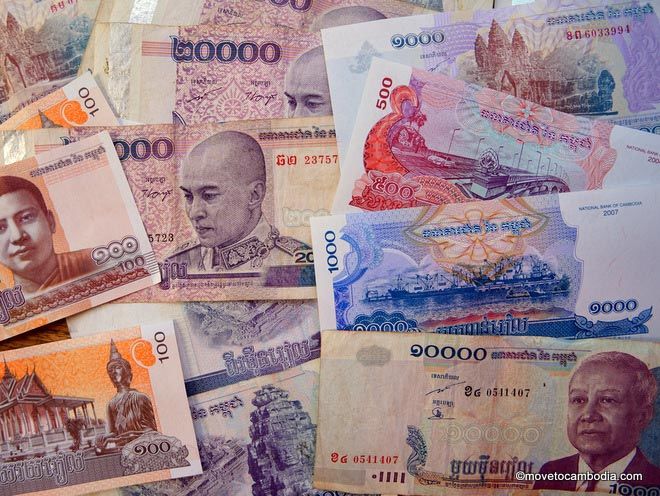The US dollar is Cambodia’s unofficial second currency, but that’s starting to change.
The official currency in Cambodia, the Cambodian riel, trades at around 4,000 riel to the US dollar. But there’s a high level of dollarization in the country. What this means is that you don’t need to be concerned about getting riel when you arrive in Cambodia. In fact, the visa you get on arrival must be paid for in US dollars. This is starting to change, and Cambodia is in the middle of a de-dollarization campaign, and small US notes are being phased out of circulation.

Keeping it riel: Cambodian currency
In 2020, the process of phasing out small US notes has begun. $1, $2, and $5 bills are not usually accepted in Phnom Penh, although they are still accepted in most of tourist-oriented Siem Reap. $10 and $20 bills are still accepted, but you will receive your change in riel. If you are allowed to use smaller bills, you will still receive your change in Cambodian riel.
Many tourist-oriented businesses still quote prices in dollars, but that is likely to change over the coming year or two. Unlike in many countries, if you pay in US dollars the exchange rate you will get is quite fair. At the time of writing the official exchange rate is 4,025 riel to the dollar, versus the street rate of 4,000 to the dollar, a difference of about 6 cents.
Whether you make a purchase in dollars or riel, you’ll get change for your purchases in riel (1,000 riel is 25 cents). If you do want to change money so that you have riel on hand, you can do so at any bank in Cambodia. You’ll get better rates in the local markets, where you’ll be able to identify the moneychangers by their glass cases filled with piles of notes. Be warned, though, that it’s rare to find notes over 10,000 or 20,000 riel ($2.50 and $5, respectively), so changing a relatively small amount of US dollars can leave you with a big pile of cash.
At border towns, such as Koh Kong or Ha Tien, you’ll often find the currency of the neighboring country also in use, meaning there can be three currencies in circulation: the riel, the dollar, and the Thai baht or the Vietnamese dong. If you go through a land border, you may be told that there are no ATMs in the next town, or that you need Cambodian riel to get through. This is not true, and visa prices are charged in US dollars.
In the Cambodian countryside the economy is almost entirely in riel, but even so you may be able to use dollars. Do not expect anyone to change a $20 bill for a $0.50 purchase, though, so plan ahead and bring riel if at all possible.
Your US dollars will be rejected if they are ripped, torn, or otherwise overly abused (although you can expect to see filthy riel in circulation). Old-style US bills are also not welcome, so make sure that the cash you bring is fairly new.
ATM machines in Cambodia dispense US dollars and Cambodian riel.
Want to learn more about Cambodian currency? Read more about the money museum in Phnom Penh.